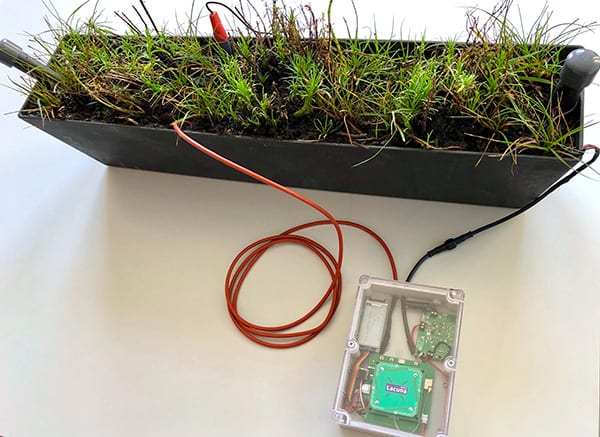Plant-e, Lacuna Space Transmit Plant-Powered IoT Sensor

Plant-powered IoT sensor. Photo: Lacuna, Plant-e
The first-ever plant-powered sensor, developed by Plant-e and Lacuna Space, has been transmitted to a satellite in space, the companies announced Tuesday. The Internet of Things (IoT) prototype device uses the electricity generated by living plants to transmit LoRa messages about air humidity, soil moisture, temperature, cell voltage, and electrode potential to Lacuna’s satellite.
The pilot service is supported by the ARTES program from the European Space Agency (ESA). The companies say that the technology’s future applications are in critical data gathering from agricultural land, rice fields or other aquatic environments without the need for any external energy sources.
Plant-e, a start-up from the Netherlands, has developed a technology to harvest electrical energy from living plants and bacteria to generate carbon-negative electricity. And Lacuna, based in the U.K. and the Netherlands, is launching a Low Earth Orbit (LEO) satellite system that will provide a global Internet-of-Things service, aiming to collect data from sensors even in remote areas with little or no connectivity.
“This opens up a new era in sustainable satellite communications,” said Rob Spurrett, Lacuna Space CEO and co-founder. “There are many regions in the world that are difficult to reach making regular maintenance expensive and the use of solar power impossible. Through this technology we can help people, communities and companies in those regions to improve their lives and businesses.”